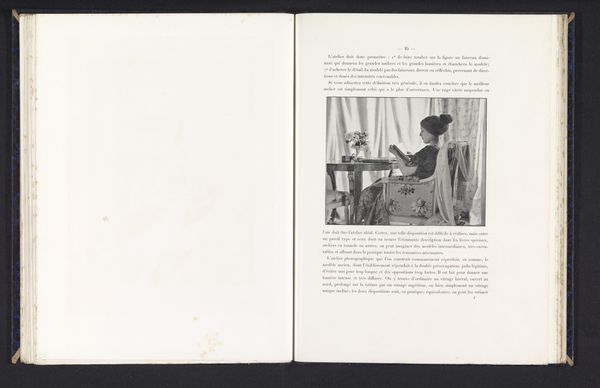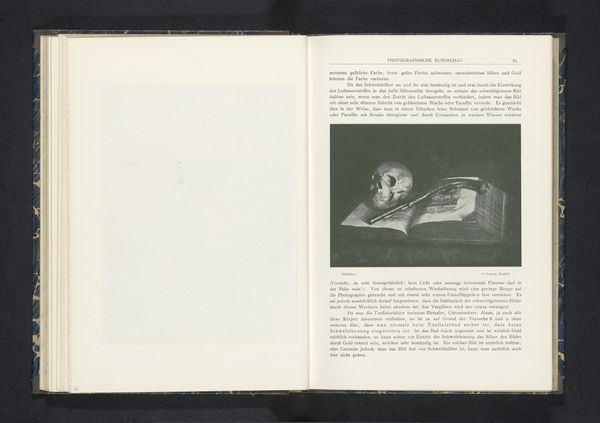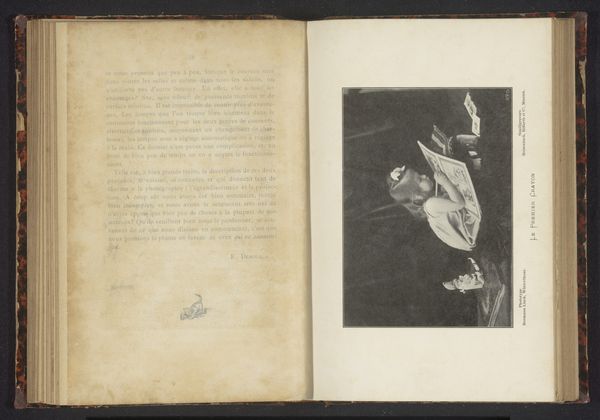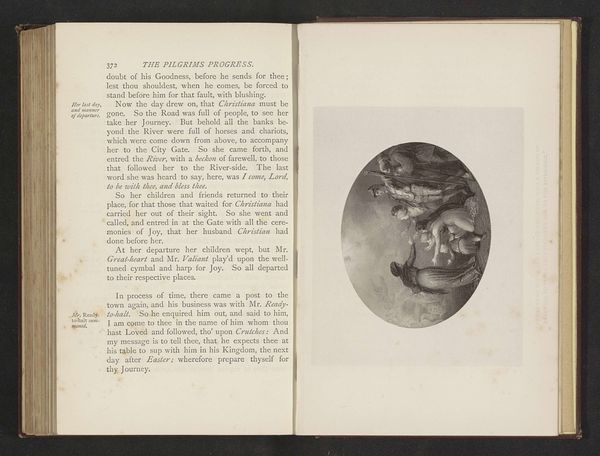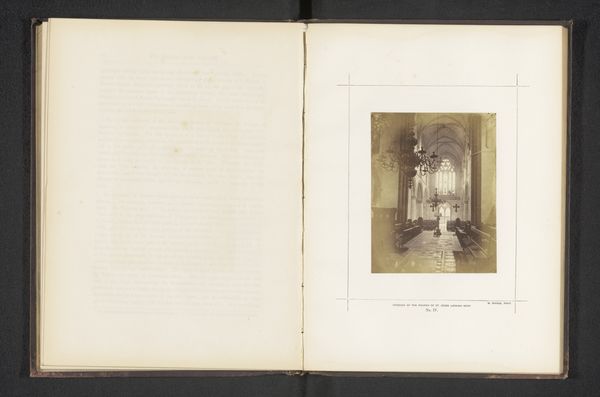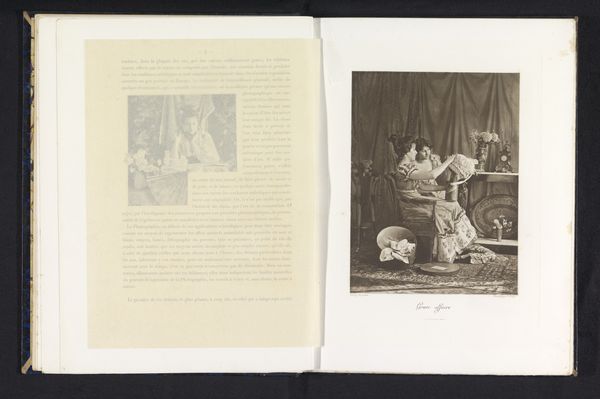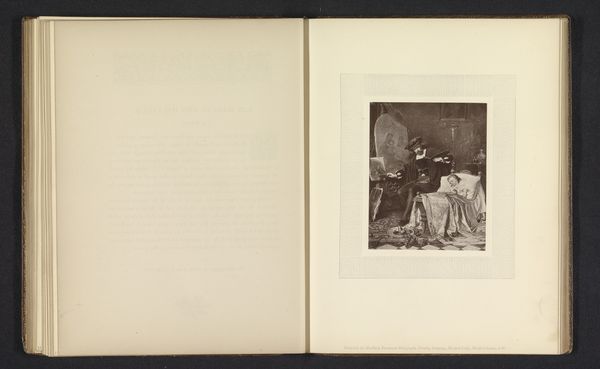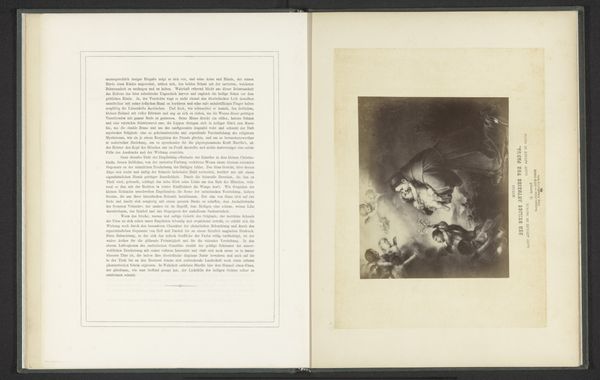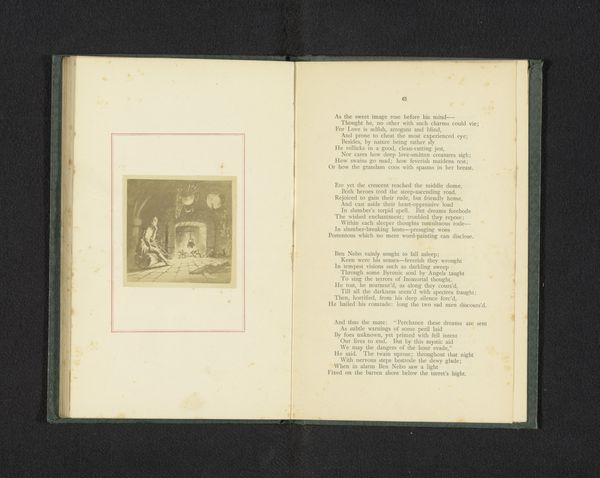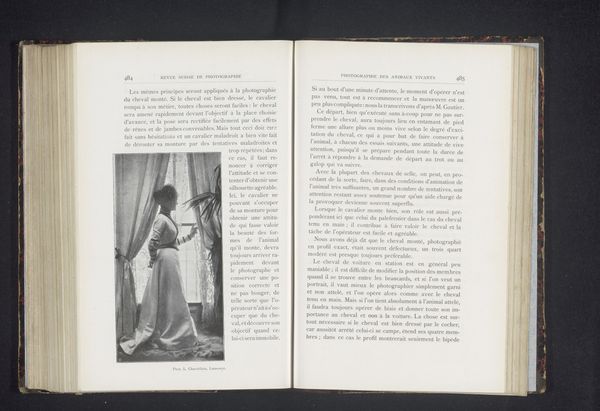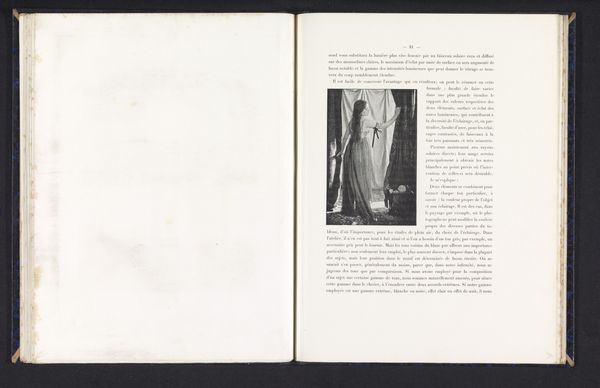
Dimensions: height 218 mm, width 160 mm
Copyright: Rijks Museum: Open Domain
Curator: This is "Vrouw doet een lamp aan," which translates to "Woman Lighting a Lamp," by Constant Puyo. We believe it was created sometime before 1896. It's a photograph printed on paper, exemplary of Pictorialism. Editor: There's an incredible intimacy to the piece, despite the subjects averted gaze. The light source dominates the composition, both illuminating and obscuring. Curator: Absolutely. Consider the symbolic weight of illumination during this era. Light becomes knowledge, a modern force dispelling shadows of ignorance. The woman enacting this ritual isn’t merely lighting a lamp; she’s actively participating in this enlightened world view. The soft focus is typical of Impressionism as well. Editor: Yes, the focus and chiaroscuro effects soften the reality of domesticity, which is an important departure from literal documentary. There’s an element of Impressionist aesthetics here too; you could extract form with values independent of line work. See how it suggests feeling rather than replicating an environment. Curator: The floral patterned wallpaper and intricately detailed lace suggest comfort, privacy, the refuge of domestic space that was growing increasingly significant within the evolving social constructs around the fin de siecle and burgeoning feminist discourse. Editor: The tonality works almost like a painting. Puyo certainly manipulated the process in order to achieve a unique material texture and depth. Note also the composition and limited use of diagonals to make it a much less restless design. Curator: Exactly. Pictorialism sought to elevate photography to the level of fine art, so referencing painting's compositions and symbolic language would elevate this. She almost looks as though she were tending a sacred flame, linking past spiritual rituals with the emerging world of modern technology. Editor: So, by analyzing its materiality, visual cues, and historical positioning, one recognizes Puyo's genius. This intimate genre portrait has lasting implications. Curator: Ultimately, we’re invited to reflect upon the human relationship with progress and illumination—literally and figuratively—in this intriguing historical document.
Comments
No comments
Be the first to comment and join the conversation on the ultimate creative platform.
